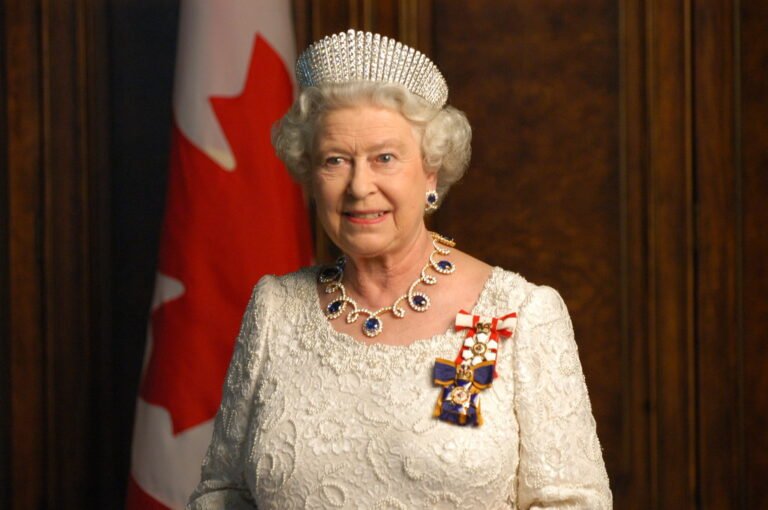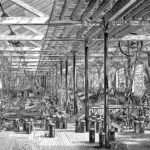Richard III is a fascinating historical figure. His life and reign are filled with drama and controversy.
Richard III ruled England for a short time, from 1483 to 1485. His story is marked by political intrigue and ruthless ambition. Shakespeare’s play, “Richard III,” portrays him as a villainous king. But was he truly as wicked as depicted?
Historians have debated his legacy for centuries. Some see him as a tyrant, while others believe he was a misunderstood ruler. This blog will explore Richard III’s life, his path to the throne, and his lasting impact on history. By understanding his story, we can better grasp the complex nature of leadership and power in medieval England.
Richard III’s Rise To Power
Richard III’s path to power was marked by ambition and strategic alliances. He seized the throne by declaring his nephews illegitimate. His reign is remembered for both political intrigue and the mystery surrounding the princes in the Tower.
Richard III’s ascent to power is a tale marked by ambition, strategy, and controversy. From his early days as a noble in the Plantagenet dynasty to his eventual reign as King of England, Richard’s journey was anything but ordinary. His path was paved with both opportunity and opposition, leaving a lasting impact on history. As we explore Richard III’s rise to power, consider how ambition shapes destiny and what lengths one might go to achieve greatness.

Credit: en.wikipedia.org
Early Life And Ambitions
Richard III was born into a family of influence and prestige. As the youngest son of Richard Plantagenet, Duke of York, he grew up amidst the tumultuous Wars of the Roses. This period was marked by fierce battles for control of the English throne between the houses of York and Lancaster.
From an early age, Richard was exposed to the complexities of power and politics. He was educated in the arts of governance and warfare, preparing him for a life that was destined to be intertwined with England’s political landscape. His ambitions were clear: Richard wanted to solidify his family’s claim to the throne and restore stability to the kingdom.
As a young noble, Richard displayed a keen sense of leadership and intelligence. His abilities did not go unnoticed, and he quickly gained the trust of his brother, Edward IV, who became king after a series of decisive victories. Richard’s loyalty to his brother and his strategic acumen made him a valuable ally in Edward’s court.
Path To The Throne
Richard’s journey to the throne was filled with challenges and strategic maneuvers. Upon Edward IV’s sudden death, his young son, Edward V, was set to inherit the throne. Richard was appointed as the Lord Protector for the young king, a position of significant influence and responsibility.
However, the political landscape was fraught with tension and intrigue. Richard faced opposition from factions within the court who were wary of his growing power. Navigating these challenges required both cunning and decisiveness.
In a controversial move, Richard declared his nephews illegitimate, effectively nullifying Edward V’s claim to the throne. This bold decision paved the way for Richard to be crowned King Richard III. While some saw this as a betrayal, others viewed it as a necessary step to secure the stability of the realm.
Richard’s rise to power raises questions about the nature of ambition and morality. Would you make similar choices in pursuit of your goals? His story serves as a reminder of the complex interplay between personal ambition and the greater good. As you reflect on Richard III’s path, consider how history might judge the actions taken in the name of power.
The Battle Of Bosworth
The Battle of Bosworth marked the end of the Wars of the Roses. This pivotal clash took place on August 22, 1485. It signaled the downfall of King Richard III. The battle’s outcome altered the course of English history. It ushered in the Tudor dynasty. The location was Bosworth Field in Leicestershire. The fight was between the Yorkists and the Lancastrians. Richard III led the Yorkists. Henry Tudor led the Lancastrians. This battle was the last significant conflict of the Wars of the Roses.
Key Players And Strategies
Richard III commanded a formidable army. He had the support of experienced generals. His strategy relied on a strong defensive position. He aimed to use the terrain to his advantage. Henry Tudor, on the other hand, had a smaller force. His army consisted of exiles and mercenaries. His strategy was bold and aggressive. He sought to engage quickly and decisively. Crucial to the outcome was the role of the Stanley family. They initially sided with Richard but switched to Henry’s side. Their defection was a turning point in the battle.
Impact On English Monarchy
The Battle of Bosworth had lasting effects on the English monarchy. Richard III’s death marked the end of the Plantagenet dynasty. Henry VII’s victory established the Tudor dynasty. It brought stability to England after years of conflict. Henry’s reign began a new era. He worked to strengthen the monarchy. His marriage to Elizabeth of York united the warring houses. This union helped to end the Wars of the Roses. The battle’s legacy shaped the future of England. It influenced the monarchy for generations.
The Mystery Of The Princes In The Tower
The disappearance of the young princes in the Tower of London remains one of history’s most intriguing mysteries. Richard III, their uncle, is often suspected of orchestrating their fate to secure his own power. But what really happened to these boys, Edward V and his brother Richard? The truth is elusive, with a tapestry of theories and investigations offering glimpses into this historical enigma.
Historical Theories And Speculations
Many theories suggest Richard III had the most to gain from their disappearance. Some historians argue he feared the boys would challenge his claim to the throne.
Others speculate they were secretly whisked away, living anonymously to avoid execution. This theory spins tales of survival but lacks concrete evidence.
What if other political players were involved? The turbulent times saw many vying for power. Could rivals have plotted against the princes for their own ambitions?
Modern Investigations And Discoveries
Recent scientific advancements offer new ways to explore old mysteries. DNA testing on remains believed to be the princes is one avenue.
You might wonder, can modern technology truly solve a centuries-old mystery? While it provides clues, the full truth remains out of reach.
Legal investigations and archaeological digs have added layers to the story. Yet, each discovery seems to raise more questions than answers.
As you ponder this mystery, consider the impact of power and ambition. How far would one go to secure a throne?
The story of the Princes in the Tower invites you to question history’s narratives. It challenges you to think critically about the past and the evidence left behind.
Richard III’s Reputation
Richard III remains one of history’s most controversial figures. His reign is often remembered for its dramatic events and mysterious legacy. While some view him as a villain, others see a misunderstood monarch. The differing opinions on his character and actions have fueled debates for centuries.
Shakespeare’s Influence
Shakespeare’s play, “Richard III,” shaped public perception significantly. The play portrays Richard as a ruthless, cunning villain. Shakespeare’s depiction, full of intrigue and murder, captivated audiences. It painted Richard with a dark and sinister brush. This portrayal influenced generations and cemented his reputation as a tyrant. The dramatic scenes and powerful dialogues left an indelible mark.
Historians’ Perspectives
Historians offer a different view of Richard III’s reputation. Some argue he was a victim of Tudor propaganda. His rivals had much to gain by tarnishing his image. Richard’s policies and governance showed signs of a capable ruler. Evidence suggests he cared for his subjects and sought justice. Historians continue to uncover new insights, challenging old narratives. The debate about his true character persists.
Archaeological Discoveries
The story of Richard III has fascinated historians for centuries. Recent archaeological discoveries have shed new light on this enigmatic king. These findings offer a glimpse into the past, revealing secrets buried for over 500 years. The search for Richard III’s remains was a monumental task. It captured the imagination of people worldwide.
Finding Richard III’s Remains
In 2012, archaeologists made a groundbreaking discovery in Leicester. They found Richard III’s remains beneath a parking lot. This site was once the location of Greyfriars Church. The search began after historians suspected his burial there. DNA tests confirmed the skeleton belonged to Richard III. The remains showed signs of battle wounds, consistent with historical records.
Locating the remains was a significant achievement. It linked modern science with medieval history. The project drew attention from media and historians alike. This discovery reignited interest in Richard III’s life and reign.
Insights From The Burial Site
The burial site offered valuable historical insights. Archaeologists found the grave unusually small. Richard III’s body was hastily buried, hinting at his controversial death. The position of the skeleton suggested a lack of ceremony. This contrasted with traditional royal burials.
Artifacts surrounding the grave provided further context. Researchers discovered medieval tiles and pottery fragments. These items helped date the site and confirmed its historical significance. The excavation uncovered layers of history, piecing together a narrative of Richard III’s final moments.
These findings sparked debates about historical accuracy. They challenged long-held beliefs about Richard III’s burial. The archaeological discoveries were a testament to the power of modern science. They bridged the gap between legend and reality.

Credit: www.npg.org.uk
Richard III’s Political Reforms
Richard III’s reign marked a significant period in English history. Known for his controversial leadership, he also initiated several political reforms. These reforms aimed to stabilize the kingdom and improve governance. Let’s explore his economic policies and the legal and social changes he implemented.
Economic Policies
Richard III focused on strengthening the economy. He promoted trade within England and abroad. His policies aimed at reducing taxes on merchants. This encouraged more trade and business activities. He also supported local industries. The goal was to boost employment and economic growth.
Legal And Social Changes
Richard III implemented legal reforms to ensure justice. He worked on improving the court systems. His reforms aimed at making trials fairer and faster. Social changes were also a priority. He supported the rights of common people. This included protection from unlawful actions by nobles.
The Legacy Of Richard III
Richard III, King of England, remains a controversial figure in history. His reign was brief but impactful. Many know him as a villain, while others see a misunderstood ruler. His legacy continues to provoke debate and curiosity. Over the centuries, opinions about Richard III have evolved dramatically.
Public Perception Over Time
Initially, many viewed Richard III as a ruthless tyrant. Shakespeare’s play painted him as a hunchbacked villain. This portrayal stuck for generations. Yet, modern historians question this image. Recent research suggests he was a capable leader. New evidence challenges old narratives, prompting reevaluation of his reign.
In 2012, archaeologists discovered his remains in Leicester. This discovery sparked renewed interest in his life. DNA tests confirmed his identity, fueling historical debates. The public’s interest in Richard III surged after this find. His story remains a topic of fascination and study.
Impact On Popular Culture
Richard III’s influence extends beyond history books. Shakespeare’s play remains popular worldwide. It has been adapted into films, TV shows, and more. These adaptations shape how people view Richard III today. The character of Richard fascinates audiences with his complexity.
Modern writers and directors reinterpret his story. They explore themes of power, betrayal, and ambition. Each retelling adds layers to his legacy. Richard III’s presence in popular culture keeps his story alive. He continues to inspire discussions and creative works.
Re-evaluating Richard III
The story of Richard III has intrigued historians and enthusiasts alike for centuries. Known as one of England’s most controversial monarchs, Richard III’s legacy has been shaped by accounts that cast him as a villainous ruler. However, recent discoveries and research challenge these long-held beliefs, inviting a fresh look at his reign and character. This re-evaluation isn’t just about digging into the past—it’s about reshaping how we view leadership, power, and history itself.
Recent Scholarship And Debates
Recent scholarship has turned the spotlight on Richard III, bringing new evidence to the fore. Historians have uncovered documents and artifacts that suggest he may not have been the tyrant depicted in Shakespeare’s plays. These findings have sparked debates among scholars, encouraging a more nuanced view of his leadership.
Discussions now include whether Richard was a misunderstood reformer rather than a ruthless usurper. You might ask yourself, how much of what we know is influenced by the victors of history? It’s fascinating to think that a king’s reputation could hinge on the narratives crafted by his successors.
Future Research Directions
Looking ahead, researchers are eager to explore the social and political context of Richard III’s time. New technologies like DNA analysis and 3D reconstruction offer exciting possibilities. These tools could provide insights into his physical health and even the circumstances of his death.
Future studies may also focus on the accounts of those who lived during his reign. What stories were told by ordinary people? By engaging with these narratives, you can gain a fuller picture of Richard III, moving beyond the confines of court intrigue.
Have you ever wondered how different our understanding of history might be if we prioritized multiple perspectives? This approach could redefine how future generations perceive historical figures like Richard III.
FAQs
Why Was Richard III So Controversial?
Richard III was controversial due to his alleged role in the Princes in the Tower’s disappearance. His reign marked the end of the Plantagenet dynasty and the rise of the Tudors. Shakespeare’s portrayal further cemented his reputation as a villain, intensifying historical debates about his true character.
What Was Richard III Most Famous For?
Richard III is most famous for being the last Plantagenet king of England. His reign ended at the Battle of Bosworth in 1485. He is also known for the mystery surrounding the Princes in the Tower, and his portrayal in Shakespeare’s play, “Richard III.
Is Richard III Related To Queen Elizabeth?
Richard III and Queen Elizabeth II are distant relatives. Both belong to the House of Plantagenet, an ancient royal lineage. Their connection traces back through centuries of British royal ancestry.
What Happened When Richard III Died?
Richard III died in the Battle of Bosworth Field in 1485. His death marked the end of the Plantagenet dynasty.
Conclusion
Richard III remains a fascinating figure in history. His story, marked by ambition and controversy, still captivates many. Understanding his life offers insights into power, loyalty, and legacy. His reign may be over, but his impact endures. Discover more about this intriguing king and reflect on his enduring legacy.








